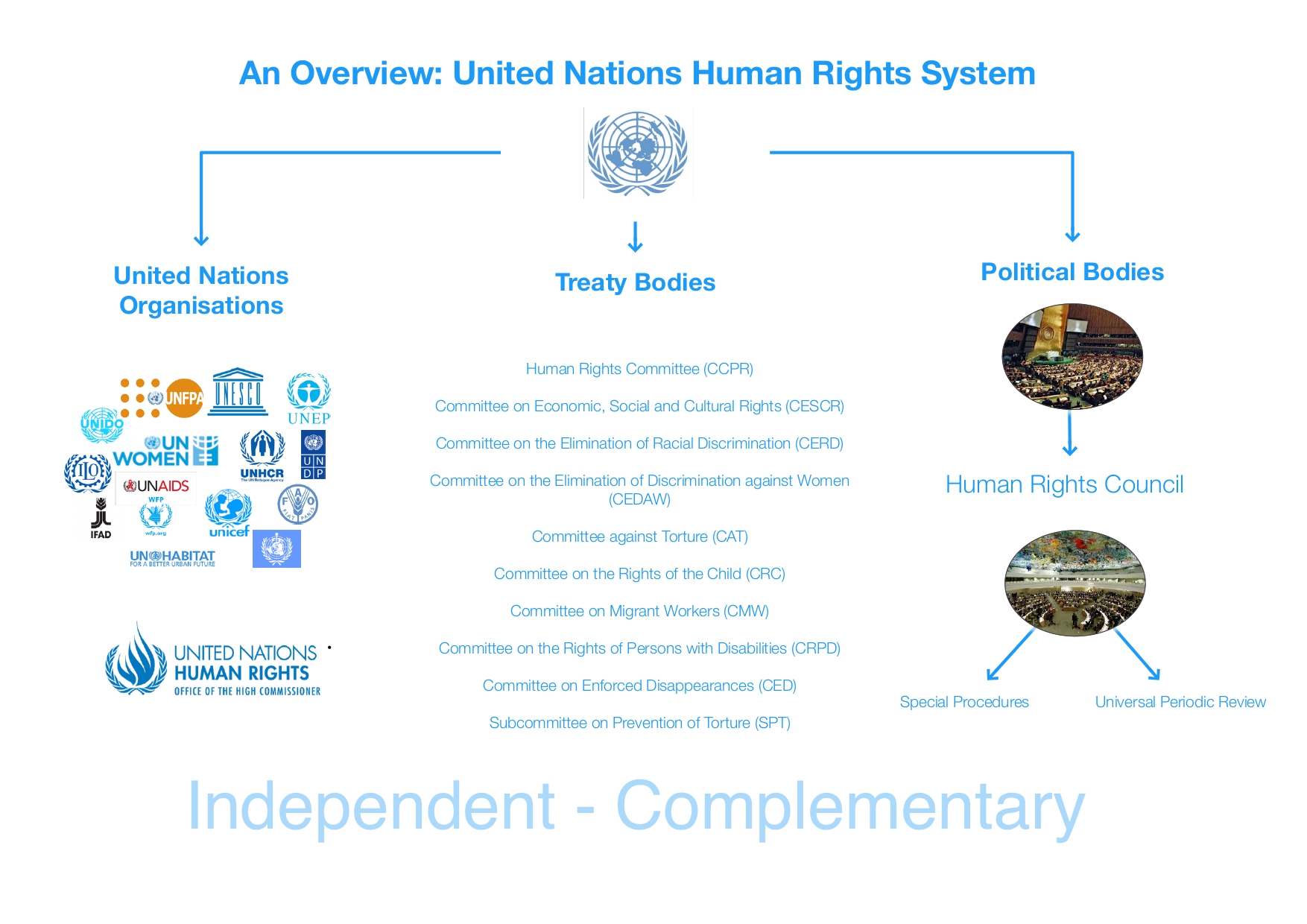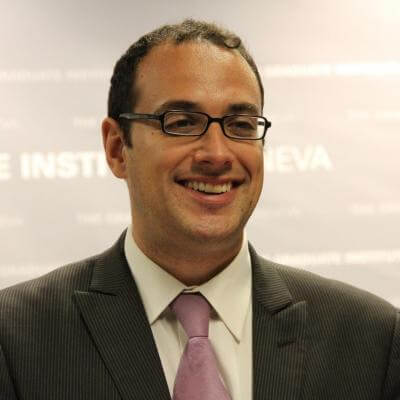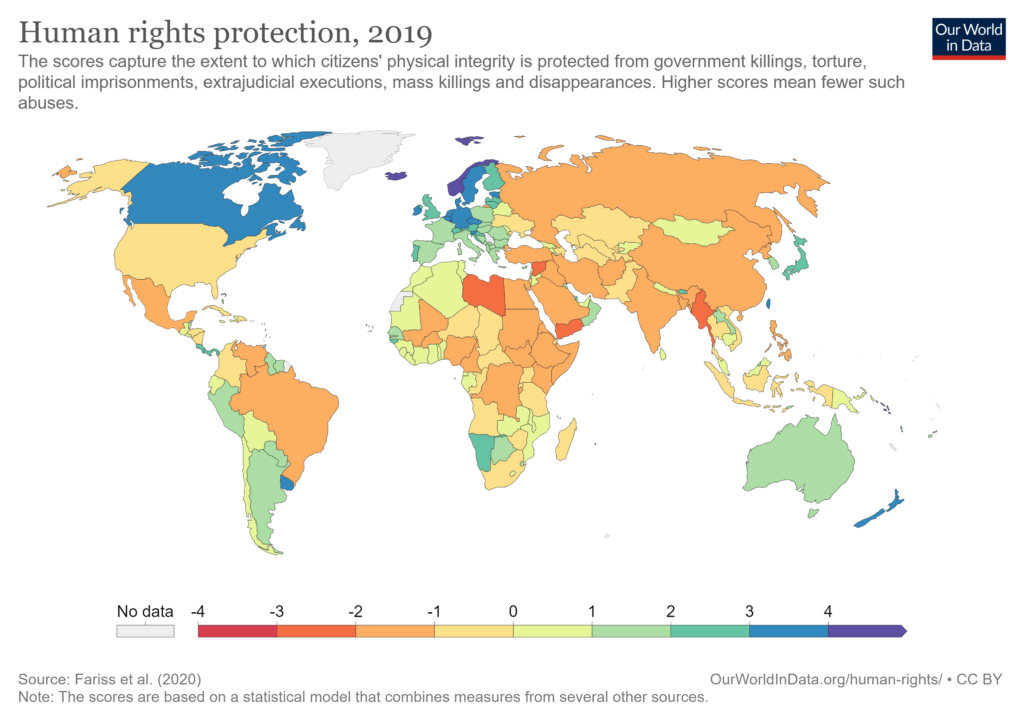Human Rights in Flux: New Directions beyond Universalism
https://doi.org/10.71609/iheid-rkte-k510The powerful intuition that all human beings are born equal, that they enjoy the very same rights and dignity, because they are of one and the same constitution, is deeply anchored in our modern political imaginaries. Capturing such views, Friedrich Schiller writes in his play Wilhelm Tell: “Yes! there’s a limit to the despot’s power! / When the oppressed looks round in vain for justice, / When his sore burden may no more be borne, / With fearless heart he makes appeal to Heaven, / And thence brings down his everlasting rights, / Which there abide, inalienably his, / And indestructible as are the stars.”
The novelty of human rights
Still, human rights have a history, and how they have been interpreted in different ways from the Enlightenment to today deserves to be unearthed if one is to gain a better understanding of the current human rights regime. Enlightenment thinkers drew inspiration from the Stoics and the natural law tradition to argue the essential equality of human beings. They thus bestowed the emerging human rights narrative with a telos to emancipate individuals from injustice, inequalities based on feudal castes and political oppression.
More radical Enlightenment thinkers, revisiting the republican constitutions of Ancient Rome and Greek city-states – still excluding more than half of their population, including women and slaves – elaborated on the idea of equal rights for all citizens. Their insights transformed into a powerful political and judicial language that found expression in the constitutions of the French and American revolutions. It is only then that the parts – the citizens – of the newly constituted sovereign – the people – were recognised and protected in the declarations on the rights of man and citizens. A free people could not rule if it were made up of unfree citizens.
During the late eighteenth-century revolutions, powerful feminist and antislavery voices gave a truly universalist meaning to the notion of human rights. As important as the date of 1789 is to European political history, is the date of 1804, when the democratic government in Haiti instituted the first black democracy out of the ashes of the French colony of Saint-Domingue. It was partly due to a series of historical contingencies reflecting political forces that the defenders of slavery and patriarchy prevailed in the United States of America and in the Bonapartist French Empire.Enlightenment thinkers drew inspiration from the Stoics and the natural law tradition to argue the essential equality of human beings.
In the middle of the twentieth century, human rights moved closer to fulfilling their universal aspiration, notably through the adoption of the Universal Declaration of Human Rights (UDHR) in 1948, drafted by a panel of nine members from nine different countries (Australia, Canada, Chile, China, France, Lebanon, the United States, the United Kingdom and the Union of Soviet Socialist Republics), and the widespread recognition of women as fully equal to men, and some colonial subjects as equal to the metropolitan citizens in the new constitutions adopted by European liberal democracies. Of course, during the early postwar era, and until the anticolonial movement gave strength to the right to self-determination, liberal democracies experienced a tension between adopting a universalist conception of human rights that included women and colonial subjects and fighting unspeakable colonial wars, as France did in Algeria to precisely deny some of its citizens their right to political freedom. Likewise, the United States continued to accept the Jim Crow system of segregation, denying the UDHR the right to review their internal laws regarding racial segregation. The equal recognition of civil, cultural, economic, political and social human rights that the UDHR gestured toward was only codified in 1966 with the International Covenant on Civil and Political Rights and the International Covenant on Economic, Social and Cultural Rights, after the majority of anticolonial struggles had been won and as the civil rights movement unfolded in the United States.
The exponential deployment of human rights
Though increasingly politicised and instrumentalised by the two opposing blocs during the Cold War – the West upholding liberal and political rights while the Communist East championed social, economic and cultural rights – the human rights regime continued to expand, notably through the adoption of further human rights treaties on the prohibition of racial discrimination (1965), against torture (1984), on the rights of women (1979) and children (1989), and the emergence of an international civil rights movement spearheaded by flagship NGOs such as Amnesty International (1961) and Human Rights Watch (1978). After the fall of the Iron Curtain and the triumph of the liberal paradigm with which it was so closely intertwined, the human rights movement reached its apogee in the 1990s, as perhaps best illustrated by the rise of the controversial concepts of responsibility to protect (R2P) and humanitarian intervention, which created new associations between the protection of human rights and what some critics saw as the rebirth of imperialistic uses of human rights for geostrategic purposes.
In the 2000s, human rights became increasingly ubiquitous through various processes of “democratisation” and “mainstreaming”, codification in national and international human rights instruments, as well as through the emergence of new human rights such as the rights of persons with disabilities, the rights of internally displaced persons, the rights of LGBTI+ persons or the rights to water and to food. The period also witnessed the growing consolidation of the UN human rights apparatus, notably through the establishment of the Human Rights Council, the Universal Periodic Review (UPR) and the Special Procedures – and the advent of a wealth of new human rights actors and mechanisms, including local, national and regional human rights institutions, an armada of civil society organisations and activists, monitoring agencies, experts and academics. With the adoption of the United Nations Guiding Principles on Business and Human Rights (UNGPs), businesses have also come to play an important role in setting the human rights agenda, contributing to what some have cynically called a “human rights market”. Cities are the latest addition to this nebula of human rights actors, advocating for human rights in the fields of climate change, habitat and housing.Today’s human rights regime is more diverse and pluralistic than ever, mobilising logics of “transversality” or “intersectionality”
Today’s human rights regime is thus more diverse and pluralistic than ever, mobilising logics of “transversality” or “intersectionality”, as it is affected by and affects an increasing range of global issues such as climate change, trade, health, migration, as well as structural inequalities based on class, race and gender. Altogether, the Human Rights Council now refers to a list of 41 human rights “topics”, including albinism, freedom of religion, older persons, death penalty, slavery and trafficking, education, humanitarian emergencies, sustainable development or toxic waste. The latest issue highlighting the interdependence of human rights with adjoining fields of global governance is the digital revolution, which raises many new human rights issues, such as digital surveillance, data protection, biased algorithms, hate speech, or AI-powered weapons. As observed by Shoshana Zuboff (2019), the operations of “surveillance capitalism” are now so anchored in the everyday lives of citizens across the world that they yield a power to control and guide actions and thoughts in a way almost unmatched throughout history.
Human rights and their discontents
Despite their seeming all-pervasiveness, human rights today face criticism from many sides. Questioning the “human” in human rights and its privileged position, critics from the left advocate a posthuman or transhuman order endowing robots, rivers or animals with a legal personality. Others uphold the more long-standing argument – developed for instance during the fight for a New International Economic Order (NIEO) – that the current human rights system is fundamentally unjust, Western-based and failing to address global inequality. Such critics complain that the system is irreversibly tilted towards political and civic rights, leaving social, economic and cultural rights at the altar.Having entered an unprecedented state of flux and uncertainty, the human rights regime confronts severe criticism and structural challenges Others deplore that the technocratic nature and language of the UN has transformed the human rights system into an opaque bubble, a self-sustaining machinery that prevents democratic access, most notably to those most in need. Denouncing the discrepancy between the human rights narrative and the reality on the ground, they liken the UN human rights system to a paper tiger, or a helpless albatross issuing sterile recommendations and resolutions.
Another set of critics, arguing from a different vantage point, have traditionally maintained that human rights constitute a dangerous challenge to sovereignty, both politically and culturally. They object to, for instance, the notion of “humanitarian intervention” and denounce the culture-blindness of human rights with regard to local customs, practices and traditions. In line with the 1993 Bangkok Declaration, they condemn the human rights regime – together with its underlying Eurocentrism and fetishisation of the subjective, freedom-seeking individual – as a Trojan horse designed to spread Western individualism, egoism and societal atomisation. Politically, they fear that human rights may be used as a subterfuge to justify foreign intervention, as in the case of NATO states in Afghanistan or Iraq, or Russia in Georgia and Ukraine. An example in point is the symmetry evoked time and again by Putin between the Russian intervention in Georgia (to protect minorities in two provinces) or the recent Russian invasion of Ukraine (with its trail of human rights violations) on the one hand, and the NATO intervention to protect Kosovo from Serbian attacks on the other hand.
Merging both types of criticism, finally, a series of postcolonial voices have critiqued the human rights system for being incapable of reforming and emancipating itself from the history of Western exclusion of women, black people and queer people (among others), therefore perpetuating the Eurocentric colonial logic and epistemology.
Human rights’ Gordian knots
As the human rights regime seems to have entered an unprecedented state of flux and uncertainty, confronting severe criticism and structural challenges, two questions arise.
The first is whether human rights, paradoxically, may become victims of their own success as they continue to expand and ramify. Could their inflationary use – including by atavistic forces referring to them more cynically – eventually erode their operability and epistemic traction? Rhetorically, indeed, human rights have become a reference that circulate in many opposite political discourses and imaginaries. The second question is whether human rights would perdure without the increasingly challenged bedrock of liberal (and universalist) assumptions about democracy, emancipation and progress on which they have been erected? To answer these questions, a series of Gordian knots inherent to the human rights system needs to be further explored.
The first of these is the intrinsic tension between civil and political rights on the one hand, and social, economic and cultural rights on the other, invoking an age-old tension between liberty and equality. Even though economic, social and cultural (ESC) rights, such as rights to work, social security, food, housing, water, sanitation, health and education, have been enshrined in numerous international human rights instruments since 1948, civil and political rights have indisputably taken precedence thus far. As China and others have, however, not failed to point out, issues of poverty, inequality and development must play a crucial role if the emancipatory promise of human rights is to be fulfilled. Redistributive governance practices, including on a global level, thus remain crucial for the advancement of the human rights agenda as a whole. The rise of neoliberalism and the demise of the NIEO, in the wake of the election of conservative governments in the United States and United Kingdom in the 1980s, has played no small part in the exclusion of concepts such as the right to development in the human rights regime.Would human rights perdure without the increasingly challenged bedrock of liberal assumptions about democracy, emancipation and progress?
A second Gordian knot is the liberal assumption of the precedence of the individual over the collective. Rooted in the Enlightenment ideal of individual emancipation from social constraints and the (Kantian) tenet that rights are held by individuals by virtue of their rational subjectivity and will to freedom, the large majority of human rights are framed in terms of the individual. Many outside the West, however, stress the key role of society and the social fabric in shaping individual existences, arguing that collective solidarity and norms should prevail over individual autonomy. Accordingly, many regional charters have, somewhat schizophrenically, integrated both the mainstream liberal narrative on human rights as well as passages stressing group rights and the right to sovereignty. The African charter of Banjul, for instance, explicitly refers in Articles 27 and 29 to the duties of individuals towards the family, the society and the state.
Still, from the many financial crises on the 1990s onward, progressives have revived the struggle first led by newly independent states in the 1970s to integrate collective rights into the human rights system, such as the self-determination of peoples, sovereignty over natural resources – notably for indigenous populations – and the right to land and the right to development. It can be argued, indeed, that in many ways collective rights already played an important role in the international system before 1948, notably through the minority protection instruments elaborated by the League of Nations. Nevertheless, the League system established for the protection of minorities, which closely emulated that established for the Mandates, was strongly anchored in imperial beliefs in the right of great powers (France and the United Kingdom in particular) to intervene in case new democracies in Eastern Europe failed to protect minorities.
Currently, activists claim that particularly vulnerable groups, minorities or collectivities that have historically endured discrimination or suffering should be accorded specific rights and protections, partly with a view to achieving objectives of restorative justice. But they do not necessarily claim for a prerogative of the permanent members of the UN Security Council to intervene and enforce such rights should they be threatened by the central state of the country in which they are situated. Ultimately, the question remains whether the cultural, collective and group-based challenge to the individualist framing of the current human rights regime can be grafted on new forms of transnational governance devoid of the neo-imperialist visions that once sustained the League’s constitution.
A third Gordian knot for the human rights regime is the reconciliation of normative integrity with the prerogatives of praxis. While neat on paper, human rights often reveal themselves as highly complex and sometimes contradictory when being implemented on the ground. As anthropologists have long argued, the whole debate over the theoretical foundations and ontological status of human rights might prove misguided, or at least of secondary importance, when compared to the imperatives of emancipatory praxes on the ground. In local contexts, indeed, human rights are frequently not an issue of black or white but of various shades of grey, requiring translation, adaptation and a certain degree of compromise.Human rights are not only about cold reason and a priori normative claims but also about passion, thymos and emotions
From such a perspective, human rights depend on the attitude and engagement of activists and the oppressed people on the ground, for whom they constitute a set of resources, a rhetorical weapon, or a language of resistance to change the world, to change their world. In many ways, it can thus be argued that human rights are not only about cold reason and a priori normative claims but also about the passion, thymos and emotions of those who practice and interpret them on a daily basis.
Accordingly, the constant expansion of human rights is to be welcomed, increasing their traction and impact. How far the practice of human rights can, however, be decoupled from a normative core, or to which extent we should argue in favour of their radical contingency, as claimed by Upendra Baxi (2009), remains unclear. The danger lurks of falling into an unreflective, utilitarian approach focusing only on the results without questioning the principles one is acting upon, or, as Xi Jinping put it, “there is no best, but only better human rights” (Guangjin 2020: 25).
Towards a more inclusive human rights system?
How, then, can human rights be advanced as the twenty-first century unfolds?
The most straightforward option consists in further consolidating and improving the extant system, addressing pitfalls and recalibrating dissonances. The political and social dimensions, for instance, may be further brought into line by strengthening the ESC rights – as they constitute, after all, two sides of the same coin. More generally, most human rights processes and mechanisms can be further improved, notably by upscaling their monitoring, implementation and enforcement. It seems imperative, in particular, that human rights be better integrated with today’s global governance mechanisms, most importantly at the WTO and the IMF, two essential international economic institutions which have thus far recoiled from streamlining human rights into their provisions.A process of cultural renegotiation of the nature and foundations of human rights could contribute to healing, correcting and adjusting some of its birth defects. Finally, some of the bolder ideas for reform include the extension of human rights obligations to non-state actors and the creation of a world court of human rights.
A second option involves a more radical renegotiation of the moral and philosophical core of human rights. As a narrative shaped by a multiplicity of actors and voices, the discursive plasticity and fluidity of human rights constitute an opportunity for elaborating a new intercultural consensus on human rights. Such a process of cultural renegotiation of the nature and foundations of human rights could contribute to healing, correcting and adjusting some of its birth defects. Including voices hitherto excluded or silenced, most notably from the margins and the oppressed, would bolster the global reach of human rights and their democratic legitimacy. The outcome, in many ways, would likely be a human rights system that is at once more collective and more social.
An alternative to such an ambitious, and perhaps utopian, reconstruction of the human rights paradigm would be to identify a “minimal” core of human rights forming a consensus among all actors. A normative nucleus of human rights constituting a red line not to be crossed would then be complemented by a wider set of more malleable human rights adaptable to local contexts. Such a system of variable geometry would run counter, however, the principle of indivisibility that lies at the heart of the current human rights system. Though at first sight it might seem straightforward to identify a set of core practices to be condemned, like torture, human sacrifice or mutilation, in practice, defining such a hierarchy among human rights might prove not only tenuous or illusory but also counterproductive.
The final scenario, the disintegration of the human rights regime into a subset of discrete regional subregimes bereft of a normative centre or common compass, would cast a bleak picture on the future of human rights. Although human rights regimes have always had a strong regional dimension as far as enforcement is concerned, there is a difference between encouraging closer contextualisation and collective learning from each region’s experience, and encouraging differences without normative exchange. While promoting regionalisation does thus not necessarily entail the formation of discrete human rights regimes forfeiting their claim to a common humanity, the risk of outright fragmentation and normative erosion of the human rights system remains real. Moreover, such a development would ultimately render human rights oblivious to local, regional and global logics of power politics, playing into the hands of the cynics and mavericks who thrive in the absence of rule of law and justiciability.If human rights are to persist they need to be driven by a certain degree of normative inspiration and moral traction.
Thus the stakes are high, as ultimately the danger is to lose the human rights advances that the global community has achieved so dearly over the past decades. If human rights are to persist, however, they need to be driven by a certain degree of normative inspiration and moral traction. This is what has allowed their establishment and popularity in the first place. The hope for a better future is based on an ideal of change or, in the words of Ruti Teitel (2021), “the elusiveness of utopia guarantees its salience”. Human rights need to be driven at their core by an emancipatory impetus, the ambition to serve the weak and the oppressed and to transcend the status quo. As Friedrich Schiller puts it in The Bride of Messina: “Law is the protector of the weak.”
-
1
 Human Rights: The State of the Art
Human Rights: The State of the ArtThe scope of human rights law has expanded considerably in recent years and lawyers have their work cut out mapping violations of existing instruments. However, argues Andrew Clapham, rights claims have never been limited to existing entitlements: the “state-of-the-art” in human rights is also about how a sense of injustice may lead to what then becomes an obvious human right.
-
2
 Rescuing Human Rights: Challenges of Identity and Diversity in a Context of Democratic Backsliding
Rescuing Human Rights: Challenges of Identity and Diversity in a Context of Democratic BackslidingIn a world of blurring identities and ever more polarised societies, authoritarian forms of government have gained ground in many countries. Exploring the backdrop to these crises of identity, Neus Torbisco Casals investigates the complex relationship between rising populism and weakening adherence to human rights norms.
-
3
 Historical Foundations of Human Rights and Contemporary Crises
Historical Foundations of Human Rights and Contemporary CrisesOnce limited to obscure negotiations at international bodies, “human rights” have today moved to the centre of the global discourse on legitimacy. Emmanuel Dalle Mulle reviews the historiographical debate on the origins of contemporary human rights discourse and explores the duality of the modern state, as both a violator and a defender of human rights.
-
4
 Human Rights and Anthropology
Human Rights and AnthropologyFor much of the 20th century, anthropologists tended to view the universalist assumptions underlying human rights with suspicion. Today, argues Julie Billaud, anthropological research has moved beyond debates on universality to focus on how human rights are actually used in practice, as well as how they are resisted and transgressed.
-
5
 The Future of Economic, Social and Cultural Rights
The Future of Economic, Social and Cultural RightsEconomic, social and cultural rights have been a central part of the human rights landscape since the 1948 Universal Declaration, and these rights have been constantly reinforced over the intervening decades. For this positive trend to continue, argue Christophe Golay and Miloon Kothari, governments must now also address various associated challenges, from climate change to migration.
-
6
 Feminisms and Human Rights
Feminisms and Human RightsFeminists have long challenged human rights orthodoxies, questioning the power relations behind the core human rights instruments. Joanna Bourke Martignoni explores the diversity of today’s feminist perspectives on human rights and proposes a critical, practice-centred approach to human rights advocacy.
-
7
 Coherence and Alignment: The Future of Business and Human Rights
Coherence and Alignment: The Future of Business and Human RightsThe UN Guiding Principles on Business and Human Rights have established a clear obligation for companies to respect human rights when they do business. However, realising this obligation in practice, suggests Gerald Pachoud, entails numerous challenges, even in countries which have been at the vanguard of implementation.
-
8
 Depletions: The Future of Population Decline and Human Rights
Depletions: The Future of Population Decline and Human RightsAfter a long period of exponential population growth, many countries now find themselves in a situation of decreasing fertility and declining populations. In response, some governments have resorted to aggressive pro-natalist policies. Drawing on the work of Michel Foucault, Aditya Bharadwaj situates these policies in a broader context and examines their impact on sexual and reproductive rights.
-
9
 Watering Down Human Rights? A Healthy Environment for the Rights to Water and Sanitation
Watering Down Human Rights? A Healthy Environment for the Rights to Water and SanitationFrom an increasing loss of biodiversity to rising sea levels as a result of climate change, the negative impacts of human activity are making the rights to water and sanitation more relevant than ever. Exploring the most significant threats to water rights, Nina Reiners argues for the importance of a comprehensive, global approach to water-related rights issues.
-
10
 Governance of Digital Technologies and Human Rights
Governance of Digital Technologies and Human RightsDigital technology brings with it a vast array of opportunities and challenges for the observance of human rights, providing expanded access to educational resources but also enabling the spread of extremism and hate speech, Ana Beduschi puts the digital transformation into perspective and makes the case for a rights-based approach to the regulation of digital technologies.
Electronic reference
Mallard, Grégoire, Dominic Eggel, and Marc Galvin. “Human Rights in Flux: New Directions beyond Universalism.” Global Challenges, no. 11, March 2022. URL: https://globalchallenges.ch/issue/11/human-rights-beyond-the-end-of-universalism. DOI: https://doi.org/10.71609/iheid-rkte-k510.DIAGRAMME: The United Nations Human Rights System

PODCAST: Human Rights and the International Criminal Court with Paola Gaeta
Global Challenges n° 11 – The Uncertain Future of Human Rights. With Dominic Eggel and Marc Galvin (Research Office – The Graduate Institute, Geneva)
PODCAST: The Universality of Human Rights with Huaru Kang
Global Challenges n° 11 (The Uncertain Future of Human Rights). With Dominic Eggel and Marc Galvin (Research Office – The Graduate Institute, Geneva)
PODCAST: Human Rights and Social Media with Stefania Di Stefano
Global Challenges n° 11 – The Uncertain Future of Human Rights. With Dominic Eggel and Marc Galvin (Research Office – The Graduate Institute, Geneva)
PODCAST: Human Rights versus Nature and Animals Rights? with Anna Ploeg
Global Challenges n° 11 – The Uncertain Future of Human Rights. With Dominic Eggel and Marc Galvin (Research Office – The Graduate Institute, Geneva)
PODCAST: Human Rights and Business, with Jérôme Bellion-Jourdan
Global Challenges n° 11 – The Uncertain Future of Human Rights. With Dominic Eggel and Marc Galvin (Research Office – The Graduate Institute, Geneva)
PODCAST: Human Rights Narratives with Tomas Morochovic
Research Office – Graduate Institute, Geneva.
VIDEO: Human Rights and Humanitarian Law in the 21st Century, with Gloria Gaggioli
Global Challenges n° 11 – The Uncertain Future of Human Rights – The Graduate Institute, Geneva
TIMELINE: Major International Human Rights Treaties
The Universal Declaration was the first detailed expression of the basic rights and fundamental freedoms to which all human beings are entitled.
The Convention on the Prevention and Punishment of the Crime of Genocide was adopted by the UN in an effort to prevent atrocities, such as the Holocaust, from happening again. The Convention defines the crime of genocide.
The Convention relating to the Status of Refugees protects the rights of people who are forced to flee their home country for fear of persecution on specific grounds.
The Discrimination (Employment and Occupation) Convention (No. 111) of the International Labour Organization prohibits discrimination at work on many grounds, including race, sex, religion, political opinion and social origin.
The International Convention on the Elimination of All Forms of Racial Discrimination (ICERD) obliges states to take steps to prohibit racial discrimination and promote understanding among all races.
The International Covenant on Economic, Social and Cultural Rights (ICESCR) protects rights like the right to an adequate standard of living, education, work, healthcare, and social security. The ICESCR and the ICCPR (below) build on the Universal Declaration of Human Rights by creating binding obligations for state parties.
Human rights protected by the International Covenant on Civil and Political Rights (ICCPR) include the right to vote, the right to freedom of association, the right to a fair trial, the right to privacy, and the right to freedom of religion. The First Optional Protocol to the ICCPR creates a mechanism for individuals to make complaints about breaches of their rights. The Second Optional Protocol concerns abolition of the death penalty.
Under the Convention on the Elimination of All forms of Discrimination against Women (CEDAW), states must take steps to eliminate discrimination against women and to ensure that women enjoy human rights to the same degree as men in a range of areas, including education, employment, healthcare and family life. The Optional Protocol establishes a mechanism for making complaints.
The Indigenous and Tribal Peoples Convention (No. 169) of the International Labour Organization aims to protect the rights of Indigenous and tribal peoples around the world. It is based on respect for the right of Indigenous peoples to maintain their own identities and to decide their own path for development in all areas including land rights, customary law, health and employment.
The International Convention on the Protection of the Rights of All Migrant Workers and Members of Their Families aims to ensure that migrant workers enjoy full protection of their human rights, regardless of their legal status.
The Convention on the Rights of Persons with Disabilities aims to promote, protect and ensure the full and equal enjoyment of all human rights by persons with disability. It includes the right to health, education, employment, accessibility, and non-discrimination. The Optional Protocol establishes an individual complaints mechanism.
This Declaration establishes minimum standards for the enjoyment of individual and collective rights by Indigenous peoples. These include the right to effectively participate in decision-making on matters which affect them, and the right to pursue their own priorities for economic, social and cultural development.
This Declaration asserts that everyone has the right to know, seek and receive information about all human rights and fundamental freedoms and should have access to human rights education and training.
Based on the information produced by the Australian Human Rights Commission















